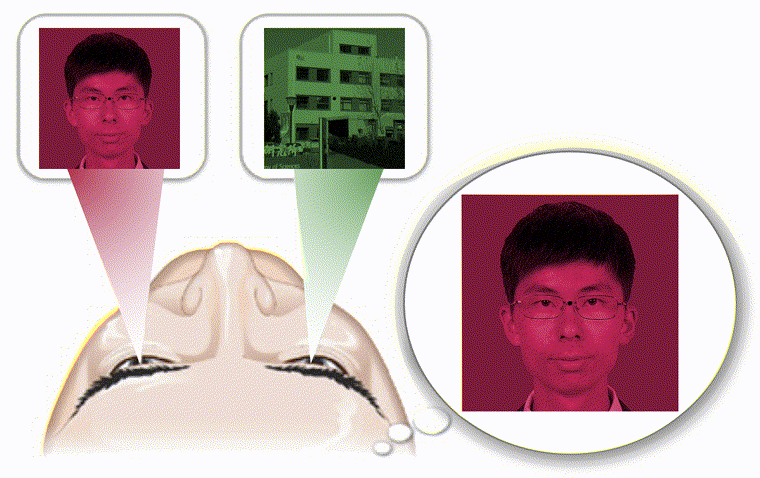Scientists Uncover Mesoscale Mechanisms of Visual Conflict Resolution
Recently, a research group led by Prof. ZHANG Peng at the Institute of Biophysics of the Chinese Academy of Sciences, used ultra-high-resolution 7-tesla functional MRI (7T fMRI) to perform mesoscale functional imaging of cortical columns, cortical layers, and subcortical nuclei.
Using a binocular rivalry paradigm, the researchers revealed how the human brain resolves perceptual conflicts and generates conscious perception through local inhibition in the sensory cortex and feedback integration from the parietal cortex.
The study was published in Nature Human Behaviour on 13 November 2025.
The researchers found that binocular rivalry originates from lateral inhibition in the superficial layers of ocular dominance columns (ODCs) in the primary visual cortex (V1), rather than in the lateral geniculate nucleus (LGN) of the thalamus.
This 7T fMRI evidence resolves long-standing discrepancies between electrophysiological findings in awake monkeys and traditional 3T fMRI studies, demonstrating that the resolution of visual conflict is driven by inhibitory microcircuits in the early sensory cortex, not by thalamic mechanisms.
This study further revealed that, although participants were unaware of which eye received the visual stimulus, eye-specific feedback signals from the intraparietal sulcus (IPS) could modulate and synchronize local competitions in both superficial and deep layers of V1, integrating them into coherent conscious perception.
Together, these findings uncover the mesoscale neural mechanisms by which the human brain resolves perceptual conflicts to generate conscious awareness.
The work provides important mesoscale functional evidence for the neural basis of human perceptual consciousness.

Figure 1: The Phenomenon of Binocular Rivalry

Figure 2: Mesoscale Neural Mechanisms of Binocular Rivalry in Humans

Figure 3: A Multilevel Model of Binocular Rivalry
(Image by ZHANG Peng's group)
Article link: https://www.nature.com/articles/s41562-025-02320-4
Contact: ZHANG Peng
Institute of Biophysics, Chinese Academy of Sciences
Beijing 100101, China
E-mail: zhangpeng@ibp.ac.cn
(Reported by Prof. ZHANG Peng's group)

